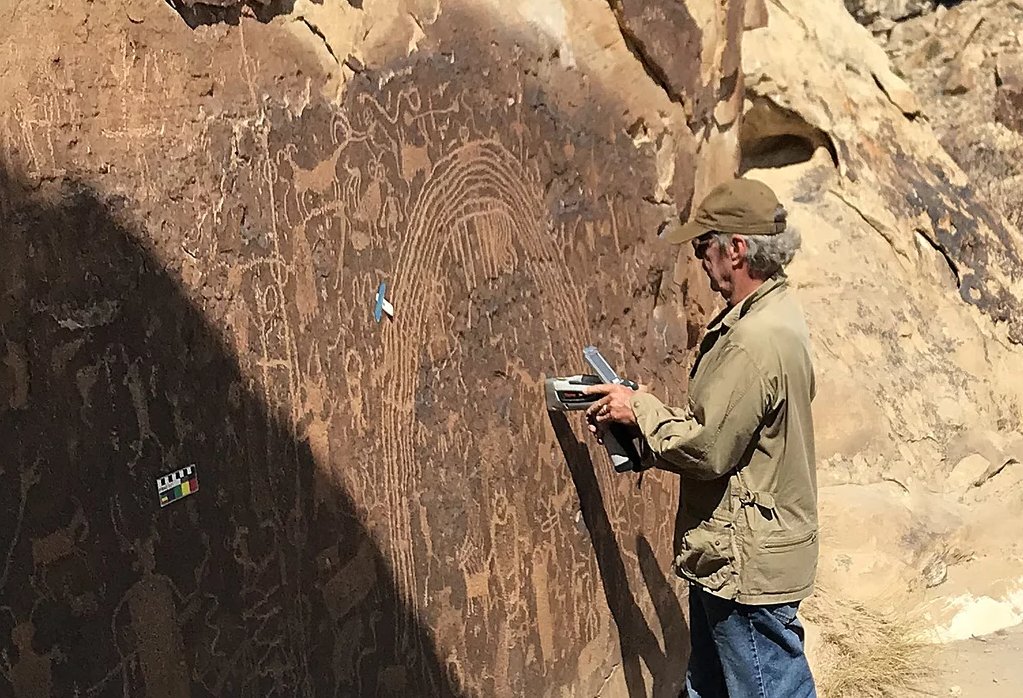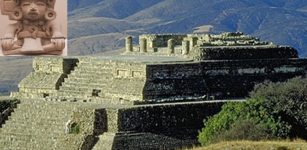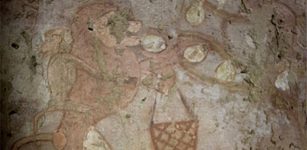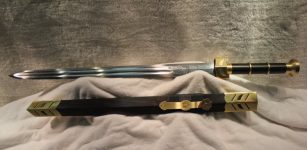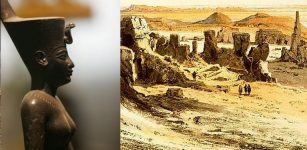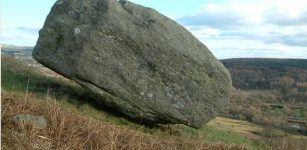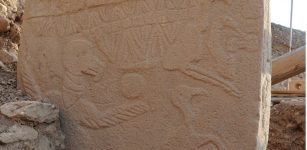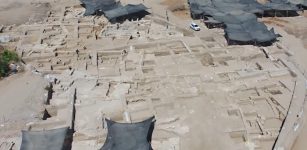12,000-Year-Old Rock Art In North America – Dating Petroglyphs In The American West
Conny Waters - AncientPages.com - Cut into several boulders located within the Pyramid Lake Indian Reservation, in western Nevada, the petroglyphs date to at least 10,500 years ago and perhaps even as far back as 14,800 years ago.
They are - no doubt - North America's great legacy! North America’s petroglyphs at the Winnemucca Lake are the oldest known.
Human-like creatures engraved in stone, fantastic animal creatures, or geometric patterns: rock engravings are often thousands of years old and allow us unique insights into the spiritual world of our ancestors.
Legend Rock site: depiction of a large, human-like being, also called anthropomorph. © Meinrat O. Andreae, MPI for Chemistry
Now, researchers have succeeded in applying their non-destructive method to dating rock art to North America. The analyses show that rock art in the Great Basin, a region in the western U.S., was produced and continuously renewed over twelve millennia. Indigenous people accessed the same artworks over and over again and endowed them with new meaning, the findings show.
Researchers at the Max Planck Institute for Chemistry say that the chronological classification of these so-called petroglyphs remains a challenge.
To reliably estimate the age of the figures carved into the rocks, the scientists determined the mass per area, or areal density, of manganese and iron on the rock surface. Both elements are part of the crust called rock varnish, which was deposited on rocks as a thin, dark coating. After carving, this layer forms again on the petroglyphs and grows over the years.
"We compared intact rock varnish with the varnish of the engravings and were thus able to classify them chronologically," explains Meinrat O. Andreae. Together with his wife, biogeoscientist Tracey W. Andreae, the director emeritus of the Mainz Institute conducted a total of 461 measurements directly on-site using a portable X-ray fluorescence device. Importantly, the rock varnish is not destroyed or damaged by the measurements.
Four sites in Idaho, Wyoming, and southern Montana
The team focused on rock art at four sites in Idaho, Wyoming, and southern Montana in the northeastern part of the Great Basin, where the Shoshones’ cultural area is to be found. Here, the diverse rock art spans a broad time period, from the Paleo-Indian era about 15,000 years ago to the recent past.
Moreover, the scientists were able to complement their own method with measurements of rock engravings whose ages had previously been dated using independent geochemical methods. Both age estimates were in excellent agreement and thus confirmed each other.
The comparison with other archaeological material at the rock art sites, which had been previously dated, also supported the researchers' age estimates.
Linear, constant deposition rates of manganese in the rock varnish
The researchers gained further certainty about the correct dating by determining at which rate manganese was deposited in the rock varnish over the millennia. They suspected a relatively uniform growth of the varnish. To substantiate this hypothesis, they conducted analyses of rock surfaces for which there is no doubt as to when they were formed. In the Great Basin, two types of surfaces comply with this condition:
The melon-shaped basalt boulders in the Snake River valley that were geologically abraded 14,500 years ago, and two circa 2,000-year-old basalt lava flows in the Craters of the Moon National Monument. In fact, deposition rates were nearly constant at both times, suggesting a roughly linear deposition.
"All of our analyses suggest that the earliest petroglyphs were created as early as the transition period from the Pleistocene to the Holocene, about 12,000 years ago, and were repeatedly revised by indigenous people over thousands of years until the recent past," explains Andreae, a biogeochemist.
At Celebration Park alone, one of the Idaho sites, rock engravings cover a span of about 10,000 years. The earliest images there were abstract forms. Later, representational images were added. At other sites, again, representational figures dominated first and abstract patterns followed later.
Broad-spectrum of styles and motifs
Overall, Andreae and his wife found a broad spectrum of styles and motifs at the sites, ranging from line drawings of abstract geometric patterns to large, human-like creatures known as anthropomorphs.
"Our method provides a link between the natural and human sciences. It enables age estimates for a statistically relevant, large number of rock art elements – with modest effort and, above all, without the need for destructive sampling," says Andreae, summing up the results of the study in the North American Basin.
The Max Planck researcher is already planning further expeditions to Saudi Arabia, where there are also numerous well-preserved petroglyphs.
Written by Conny Waters - AncientPages.com Staff Writer


